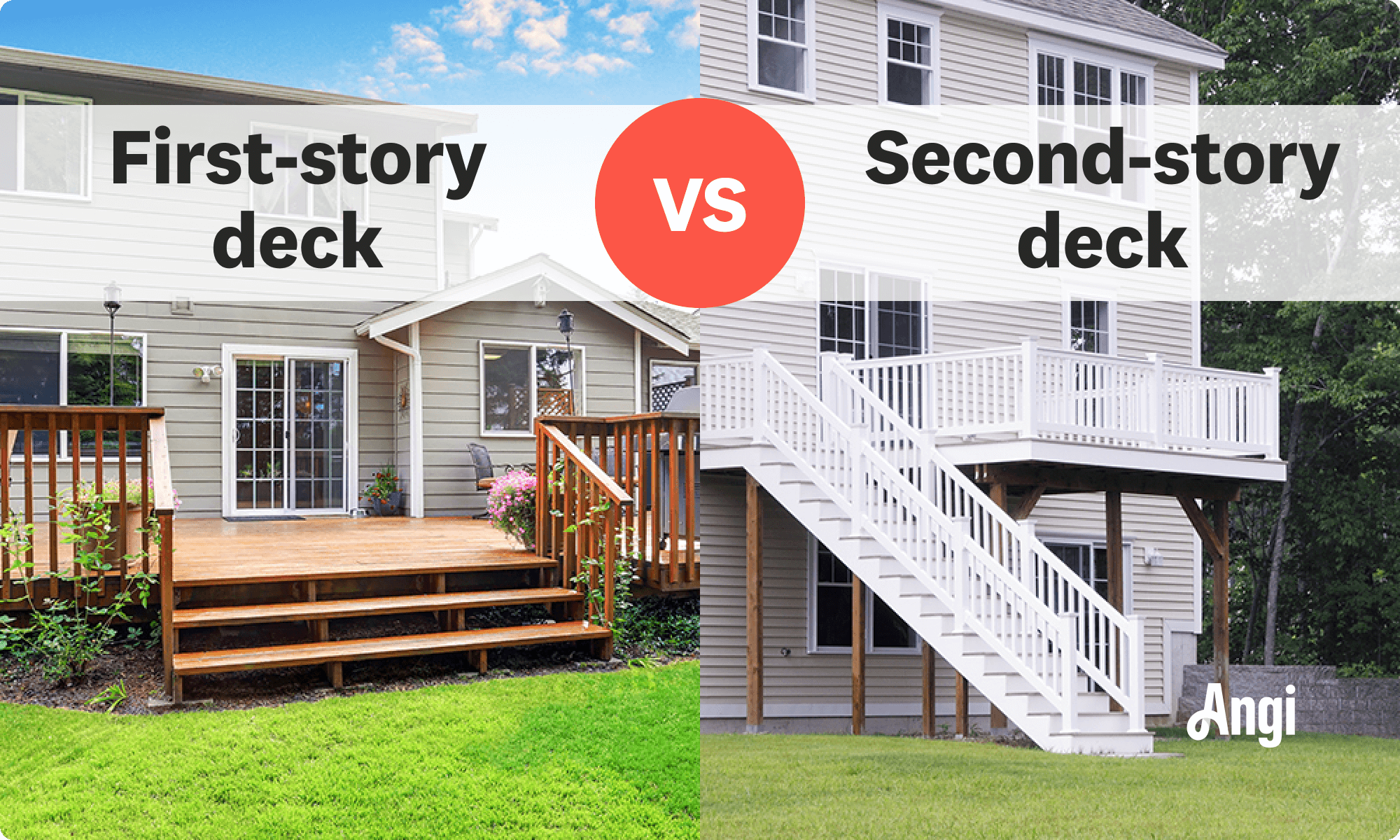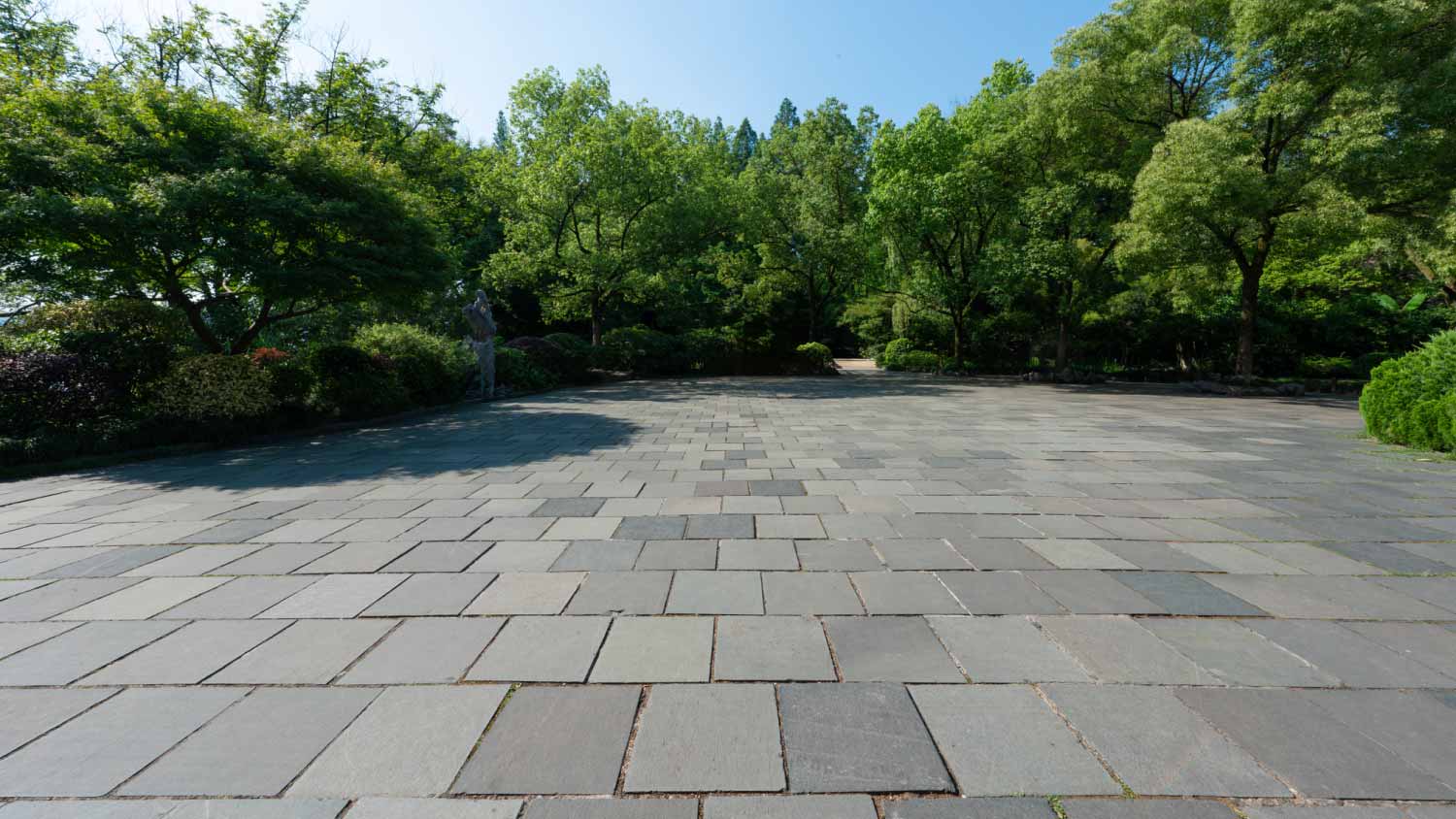Deck Step Down: Should My Deck Be Level With My Home?
Take a step in the right direction by learning about deck levels


If you’re new to the world of outdoor features, there are a few things to know before building a deck, including deck step down requirements. One of the main questions to answer: Should my deck be level with my home?
In a nutshell, the answer is—no. Your deck should never be level with your home due to the risk of water damage. If your deck or patio sits at the same height as your home, it’s easy for water to get inside and wreak havoc. We’re not just talking about puddles in your entryway, either. Let’s review patio door to deck transition requirements.
How Far Below My Patio Door Should My Deck Be?
You should install the decking a few inches below the patio and entry door threshold. Hiring a local deck builder ensures they will install the deck a minimum of 2 inches below the door, but no more than 4 inches is necessary. The reason? If your deck is level with your patio door, you invite all sorts of problems due to splashback from rainfall—think rot and other water damage.
Should There Be a Step Down to a Deck?
Yes, there should be a step down to a deck from your door. Ideally, the step should measure between 2 inches and 4 inches in height. There are benefits to adding a step down to your deck. For one, it will help keep out water and other debris. Adding a step down can help prevent water damage and dreaded water damage restoration expenses. If you decide not to build a step down to a deck, invest in water-resistant materials and waterproof seals to prevent water damage.
What Is the Best Patio Door-to-Deck Transition?
It might be tempting to keep your deck level with your home. But giving a little space—2 inches to 4 inches to be exact—between the threshold and the deck’s first step is the best transition. Knowledgeable deck builders strongly suggest having a step down built into the deck from your home’s entryway to prevent water from pooling or splashing at the entryway and getting inside your home. Over time, water damage can corrode the doorframe and impact a home’s foundation.
Should a Deck Have a Slope?
If your deck is attached to your home and its boards run parallel to the house, your deck should have a slope. It’s best if your deck has a slope of about ⅛ inch per foot to ensure that water flows away from your home.
Suppose your deck is attached to your house, and the boards run perpendicular to it. In that case, you don’t need a slope because the gaps between the deck boards should drain rainwater enough to keep it away from your home. If you have a floating deck that doesn’t touch your home, you don’t need a sloping deck because the direction of the water flow doesn’t affect your house.
Can I Build a Deck Directly on the Ground?

Yes, you can build a deck directly on the ground. Ground-level decks have varying benefits that attract homeowners looking to add a little ambiance to their backyard. This type of deck can be cost-effective and may not require additional construction for railings or stairs. But, before you start building, there are two main considerations to keep in mind before starting this project: local building codes and deck materials.
Local Building Codes
The last thing you want is the added headache of a building code violation. Research your area’s local building codes before breaking ground. This step will reveal what your local municipality considers a ground-level deck, any requirements (e.g., stairs or railings), whether or not you need a building permit and—most importantly—if you’re allowed to build one.
Building Materials
Direct contact with the ground can invite environmental stresses, as wood decays faster when in direct contact with the ground. Moisture impacts wood differently on the ground than in the air. If building a deck directly on the ground, seek out speciality-treated wood or composite building materials.
What Should Be Put Under Deck Stairs?
The space under deck stairs can be critical for preventing that area from becoming a field of weeds or worse—a moisture trap. (Too much moisture can speed up decay in wood.) Adding washed gravel or crushed stone to this area will create a natural runoff for rain and snow. Lay the gravel on top of landscape fabric to prevent weed growth. Layer the stones about 3 inches to 4 inches deep. You can also install an under-decking drainage system to avoid moisture damage, water build-up, and pesky critters.
Is It Possible to Lower a Deck?
Most people can have a pro lower their deck after it’s built. However, lowering a deck is an incredibly labor-intensive project that shouldn’t be started without serious consideration of the work and cost involved. Lowering a deck after construction requires advanced tools and construction work that not every pro may be familiar with. This also means that it’s definitely not something you should attempt to DIY.
Don’t make the mistake of thinking that lowering your deck is an easy backup in case you want a shorter deck in the future. Think very hard about the height of your deck before you have a pro build it because, though it is possible, lowering a deck is a project most people will want to avoid.
How Much Does It Cost to Build a Deck?
Building a deck costs anywhere from $4,340 to $12,550, with an average price of $8,220. This breaks down to around $30 to $60 per square foot. Materials, size, and location are the biggest cost factors. Choosing a unique design, opting for high-end lumber, and installing your deck on your home’s second story rather than the ground floor all increase the price. Deck installation is a time-consuming job, so labor typically accounts for 40% of the overall project cost.
DIY vs. Hiring a Pro
Building a deck from scratch is no easy feat, and DIY mistakes can lead to foundation issues, safety concerns, and violation of building codes. In other words, save yourself a headache and contact a local deck builder. A competent pro will get the job done efficiently and safely. As a bonus, deck builders can advise on deck placement and what materials to use.
Frequently Asked Questions
Before installing a deck, you must build a base for the deck to rest upon, often made of compacted soil or gravel. While gravel is an optional material, it helps with drainage. Some contractors also recommend installing a weed control membrane, which helps provide a solid foundation for the frame. In the case of an elevated deck, a pro will often lay down a concrete slab as a foundation.
The proper deck step height, also called a riser, is between four and seven inches. The tread depth should be at least 10 inches. For deck stairs, go with a rise of around seven inches with a run of 10 to 12 inches. These figures are intended to improve both safety and comfort, but fully depend on the design of the actual deck. Local building codes could also mandate slight discrepancies from the above numbers.
A deck doesn’t have to be perfectly level. Many pros even recommend a gentle slope to ensure proper drainage and increase longevity. The ideal gentle slope is about 1/8 to 1/4 inch per foot away from the property, leading water away from the home to prevent pooling and reduce the risk of damage. It also minimizes rot, mold, and other moisture-related problems.





- How to Build a Deck You'll Love for Years to Come
- Who Builds Decks? Who to Call and What to Know
- Planning for Decking: Everything You Need to Know to Add a Deck to Your Home
- How to Level a Deck: Everything You Need to Know
- Top Deck Maintenance Tips for Every Decking Material
- How to Repair a Deck: DIY Fixes from the Boards to the Railings
- The Ultimate Deck Safety Checklist for Homeowners
- How to Build a Floating Deck for the Best Outdoor Space
- Get Familiar With These 11 Parts of a Deck Before You Start Building
- Deck Building Codes 101: Ensuring Your Next Project Is Safe and Legal










